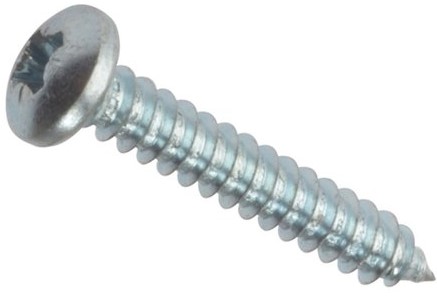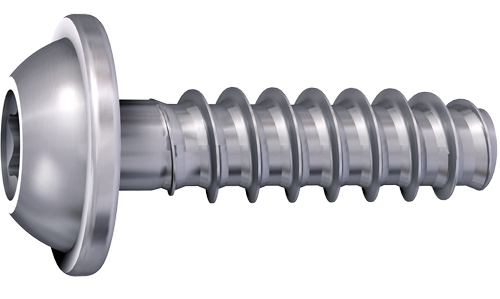Plastics are widely used to manufacture consumer electronics, telecom, and automotive parts. You can use various joining techniques such as screws, snap joints, and plastic welding to join plastic parts. But each plastic joining technique has its challenges. This article covers different types of Self tapping screws: Thread Cutting and Thread Forming screws to join plastic parts.
Selection of Screw for Plastic
Selection of the right type of fastener or screws for plastic parts is required to get the following key features in plastic part designs.
- High pullout force.
- Avoid cracks in plastic bosses.
- Increase resistance to screw loosening.
Properties of Plastic affecting the performance of Screw Joint
Following mechanical properties of plastic materials have an impact on the performance of screw joints in plastic parts.
- Flexural modulus or stiffness of the material.
- The proportion of filler material such as glass added into plastic.
- Creep rate.
- Impact of injection molding.
How Screws for Plastic are different from Standard screw?
Screws for plastics are different from standard screws in the following ways.
- Fasteners for plastics have a narrow thread profile to reduce radial stress. As a result of reduced radial stresses, we can also reduce the plastic boss thickness. This reduced plastic thickness helps in reducing injection molding defects and reduces weight.
- Radial Force required to tighten a screw with a narrow thread profile is also less compared to standard screws.
- Fasteners designed for plastics have a smaller minor diameter and large thread profile. Therefore the screw can cover a larger volume of the plastic material. As a result, the pullout resistance of the screw increases.
Various Types of Self Tapping Screws for Plastic Parts
We can classify Self-tapping screws for plastic parts into two categories. Each of these types of screws has its advantages, limitations, and applications. Various types of screws are available in these categories.
- Thread-Cutting Self Tapping Screws
- Thread-Forming Self Tapping Screws
1. Thread Cutting Self Tapping Screws
Thread cutting, self tapping screws have a sharp cutting edge. This sharp cutting edge removes plastic material when we screw the fastener inside the pilot hole.

Compared to thread forming screws, thread-cutting self-tapping screws produce small internal stresses. Therefore thread cutting screws are recommended with stiffer, fiber, or glass-filled materials.
Advantages of Thread Cutting Screws
- Low tightening torque.
- Best Choice for stiffer materials.
- Reduced radial stresses.
- Increased load-carrying capacity and pullout force.
Disadvantages of Thread Cutting Screws
- Stripping may occur during disassembly.
2. Thread Forming Self Tapping Screws
Thread-forming self-tapping screws don’t have a sharp cutting edge. These screws form threads in the pilot hole by deforming and displacing plastic material around the screw threads.

Deformation of the plastic material during tightening produces high internal stresses in the material. Therefore thread forming self-tapping screws are recommended for softer materials such as ABS.
Following are the examples of thread-forming self-tapping screws used to join plastic parts.
- Delta PT Thread Forming Fasteners
- PT Thread Forming Fasteners
- DST Thread Forming Fasteners
Advantages of Thread Forming Screws
- Self-locking screws.
- Best used for softer materials.
- High loosening torque.
Disadvantages of Thread Forming Screws
- High tightening torque.
- Increased radial stresses.
Thread Cutting vs Thread Forming Self Tapping Screws
| Properties | Thread Cutting Screws | Thread Forming Screws |
|---|---|---|
| Definition | Have a sharp cutting edge that removes plastic material when we screw the fastener in the pilot hole. | Don't have a sharp cutting edge. Thread forming screws form threads in the pilot hole by deforming and displacing plastic material around the screw threads. |
| Internal Stresses | Low | High |
| Tightening Torque | Low | High |
| Plastic Material Recommendations | Recommended using with Stiffer hard materials such as glass-filled plastic parts. | Softer materials such as ABS |
Commonly Asked Questions on Self Tapping Screws
Thread cutting and thread forming type of self-tapping screws are used in plastics. They are specially designed for plastics and different from screws for wood or sheet metal.
Yes, a hole as per recommended size is required for a self-tapping screw.
Thread cutting screw have a sharp cutting edge that removes the plastic material. Whereas, thread forming screws form threads in a pilot hole by deforming and displacing plastic material around screw thread.
We will keep adding more information on thread cutting and thread forming self tapping screws for plastic. Add your comments or questions on various types of screws for plastic in the comment box. Click this link to know the difference between screw and bolt.

Add a Comment